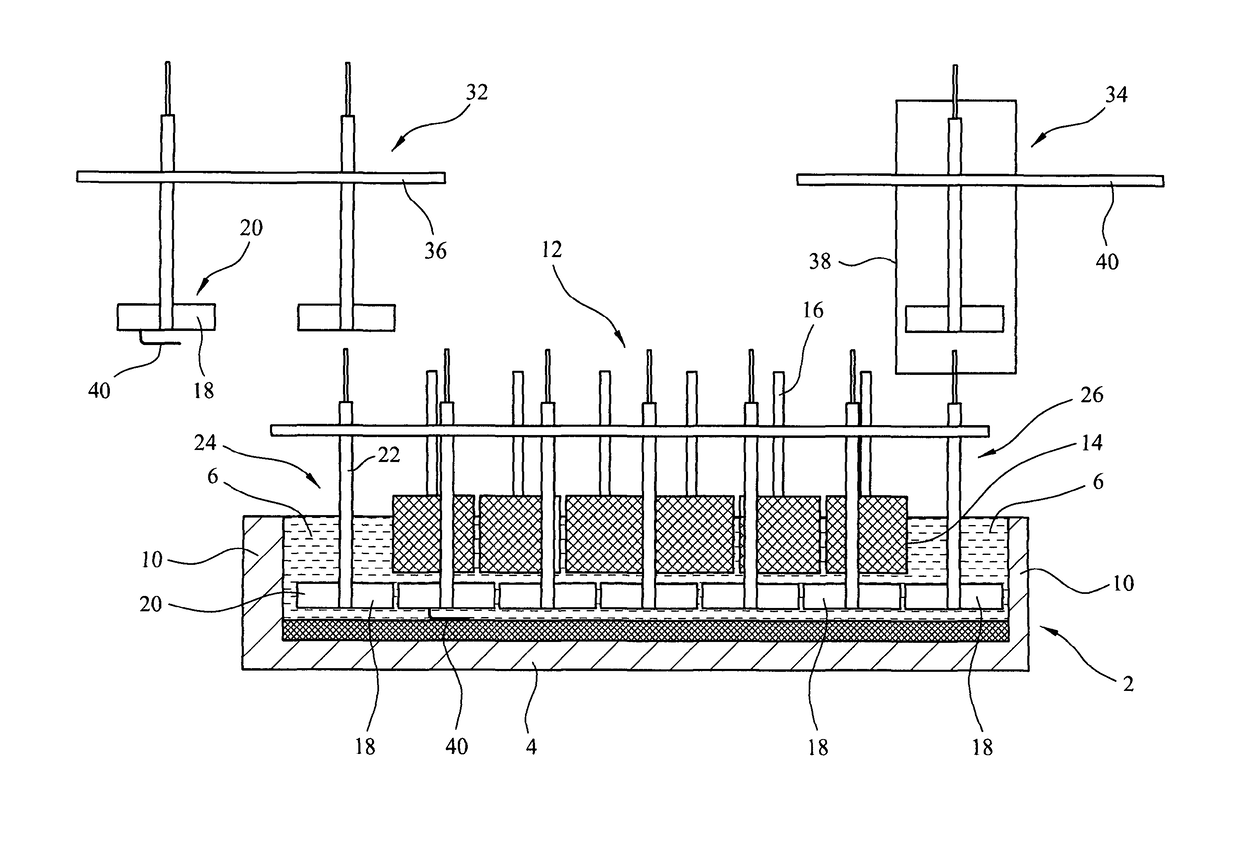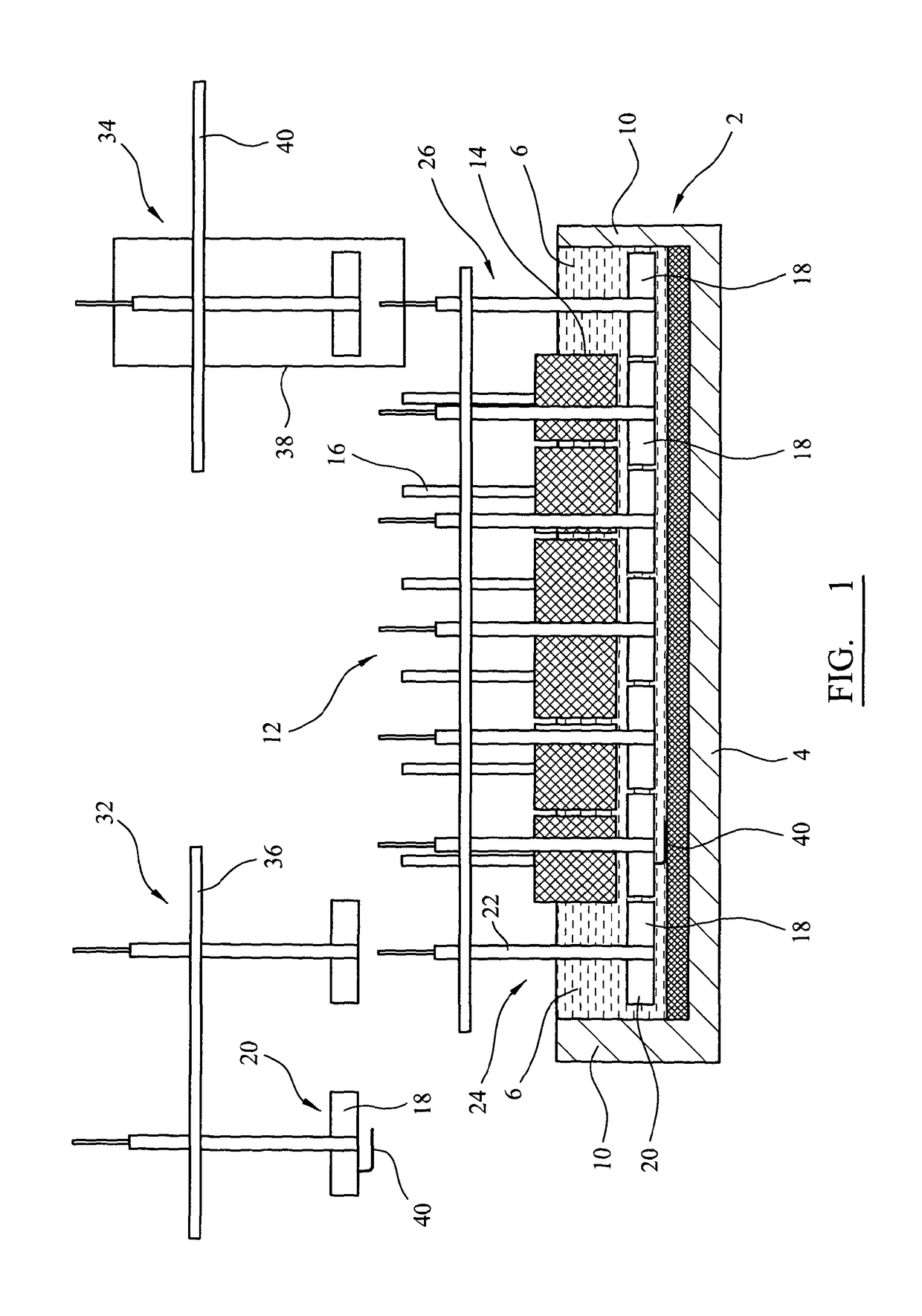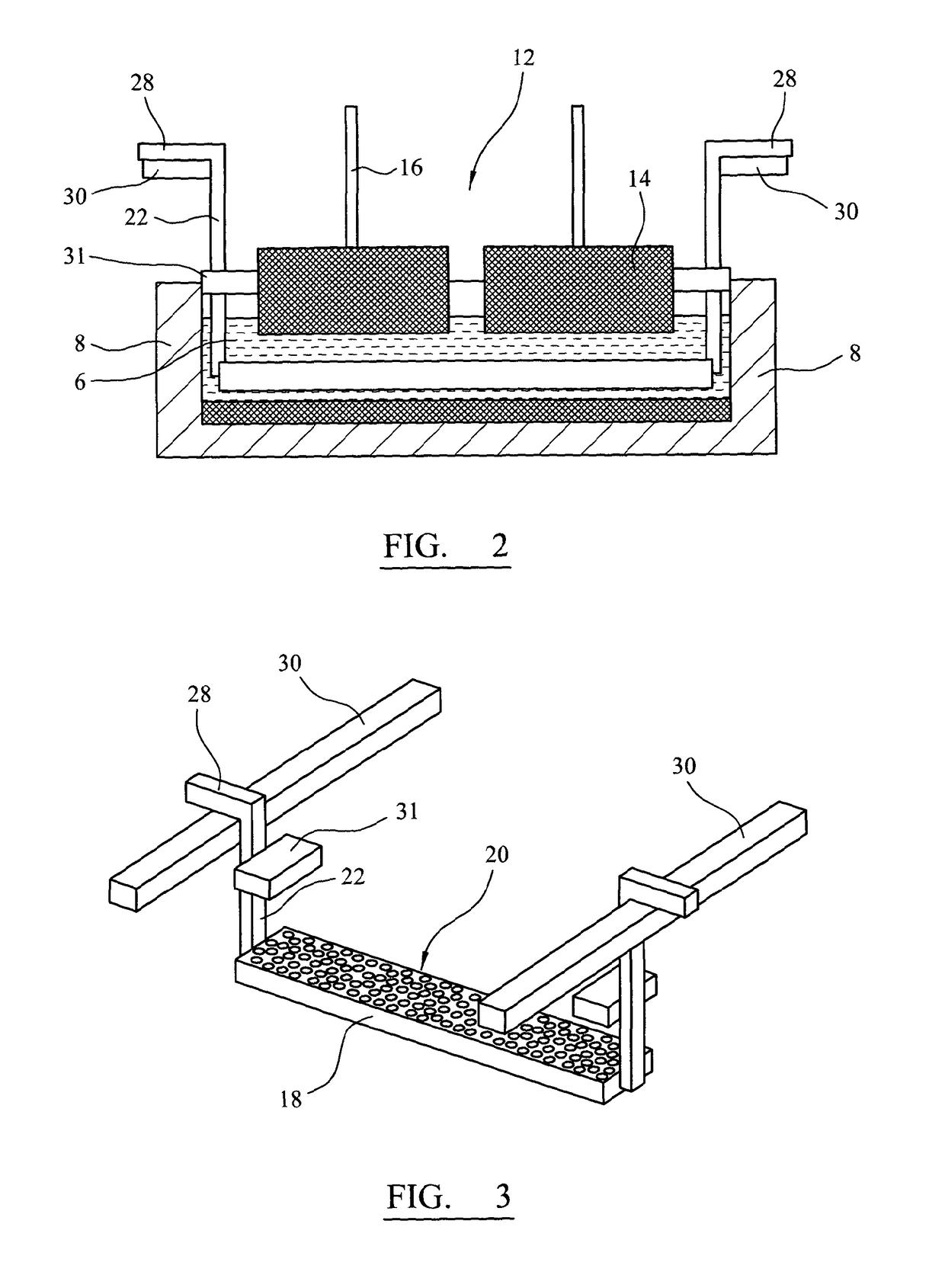Method and apparatus for electrochemical reduction of a solid feedstock
a solid feedstock and electrochemical reduction technology, applied in the field of electrochemical reduction methods and apparatuses, and to electrochemical products, can solve problems such as complex mechanical structures reduce or avoid problems such as corrosion or wear, and reduce heat loss from fused salts. , the effect of avoiding corrosion of the block or contamination
- Summary
- Abstract
- Description
- Claims
- Application Information
AI Technical Summary
Benefits of technology
Problems solved by technology
Method used
Image
Examples
first embodiment
[0050]FIG. 1 is a schematic side view of an electro-reduction apparatus according to the invention, with a side wall of the fused-salt container removed to show the structure inside the container;
[0051]FIG. 2 is a transverse section through the apparatus of FIG. 1;
[0052]FIG. 3 is a three-quarter view of a loaded cathode and two cathode supports of the embodiment of FIGS. 1 and 2;
second embodiment
[0053]FIG. 4 is a transverse section of an apparatus according to the invention;
[0054]FIG. 5 is a schematic plan view of the electro-reduction apparatus of the first embodiment;
[0055]FIG. 6 is a three-quarter view of a cathode, loaded with feedstock;
third embodiment
[0056]FIG. 7 is a schematic transverse section of an electro-reduction apparatus according to the invention, illustrating side-loading of a cathode;
[0057]FIG. 8 is a transverse section of a conventional aluminium smelter cell;
[0058]FIG. 9 is a plan view of the anode arrangement in a conventional aluminium smelter cell;
[0059]FIG. 10 is a plan view of the aluminium smelter cell of FIG. 9, with the end anodes removed;
[0060]FIG. 11 is a plan view of an aluminium smelter cell showing a frame for supporting the anodes;
[0061]FIG. 12 is a plan view of an aluminium smelter pot-room, with cells arranged end-to-end;
[0062]FIG. 13 is a plan view of an aluminium smelter pot-room with cells arranged side-by-side; and
[0063]FIG. 14 is a plan view of the aluminium smelter pot-room of FIG. 13 modified for continuous solid-phase feedstock electro-reduction according to an embodiment of the invention.
[0064]FIGS. 1 and 2 show longitudinal and transverse sections of an electro-reduction apparatus accordin...
PUM
| Property | Measurement | Unit |
|---|---|---|
| electrically-conductive | aaaaa | aaaaa |
| voltage | aaaaa | aaaaa |
| current | aaaaa | aaaaa |
Abstract
Description
Claims
Application Information
 Login to View More
Login to View More - R&D
- Intellectual Property
- Life Sciences
- Materials
- Tech Scout
- Unparalleled Data Quality
- Higher Quality Content
- 60% Fewer Hallucinations
Browse by: Latest US Patents, China's latest patents, Technical Efficacy Thesaurus, Application Domain, Technology Topic, Popular Technical Reports.
© 2025 PatSnap. All rights reserved.Legal|Privacy policy|Modern Slavery Act Transparency Statement|Sitemap|About US| Contact US: help@patsnap.com



